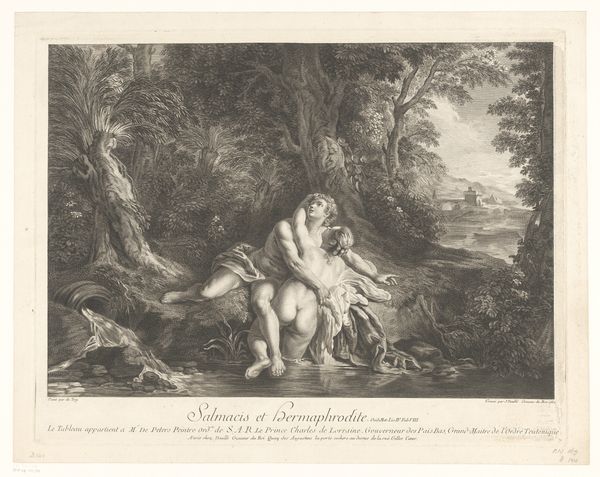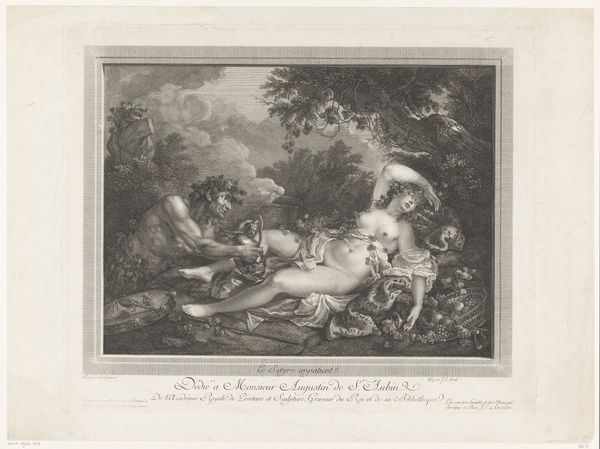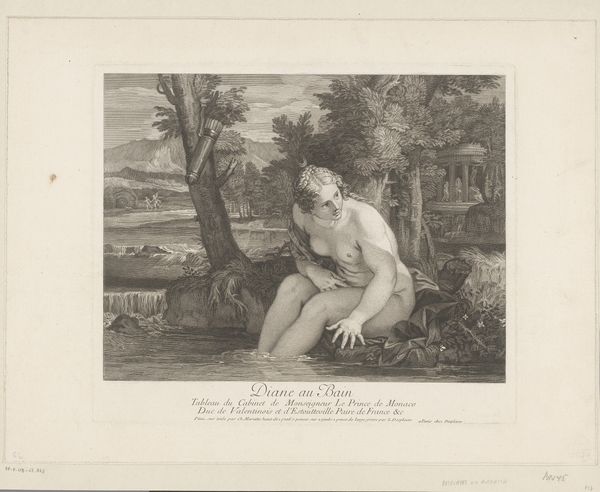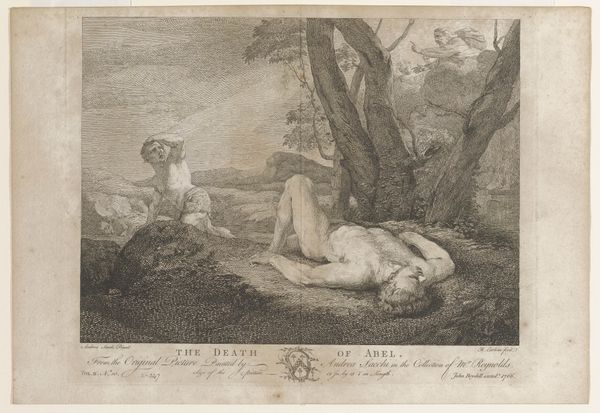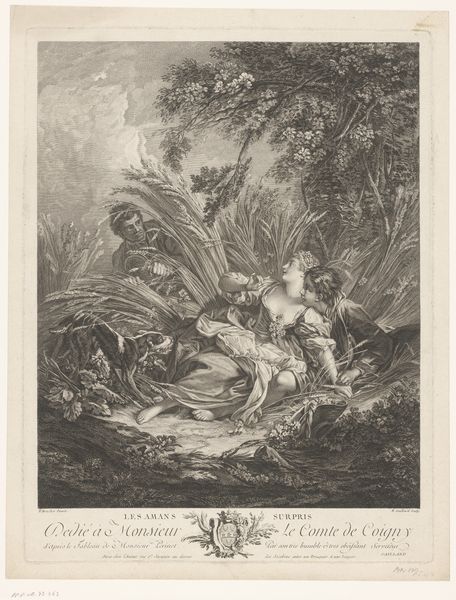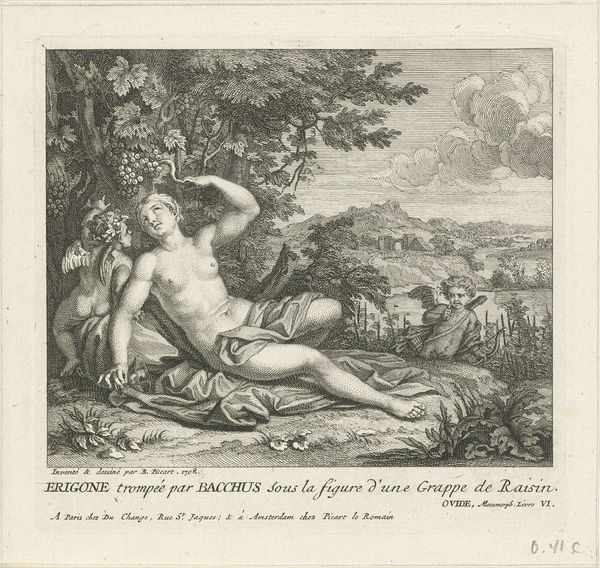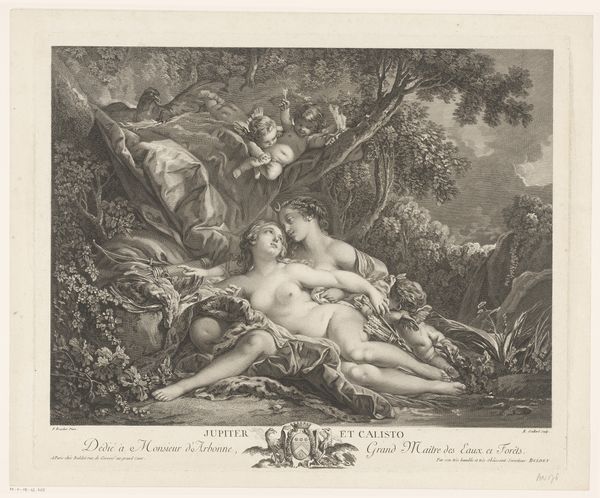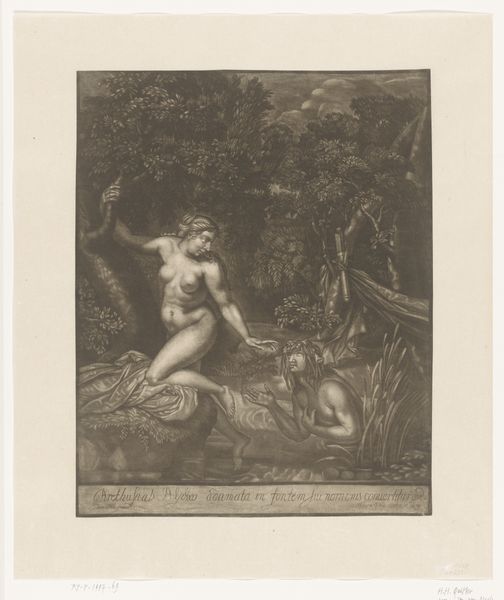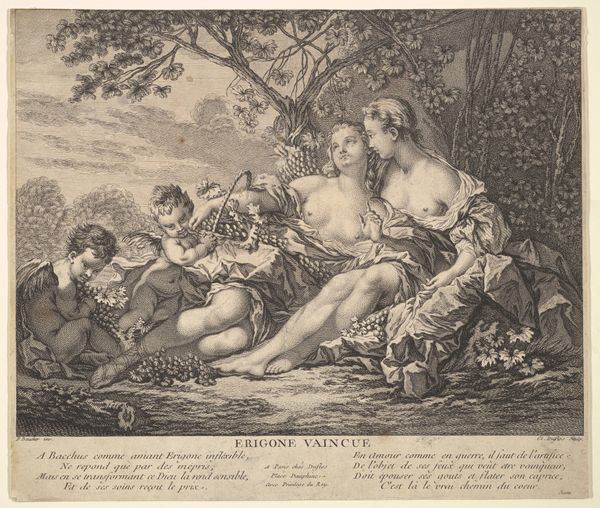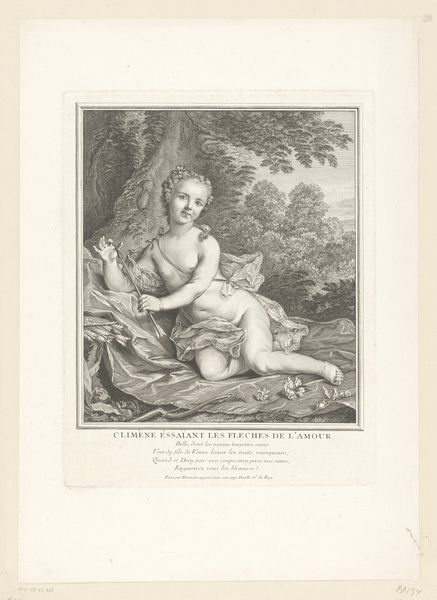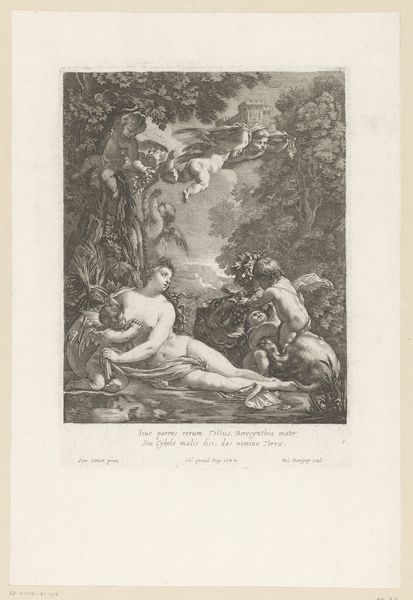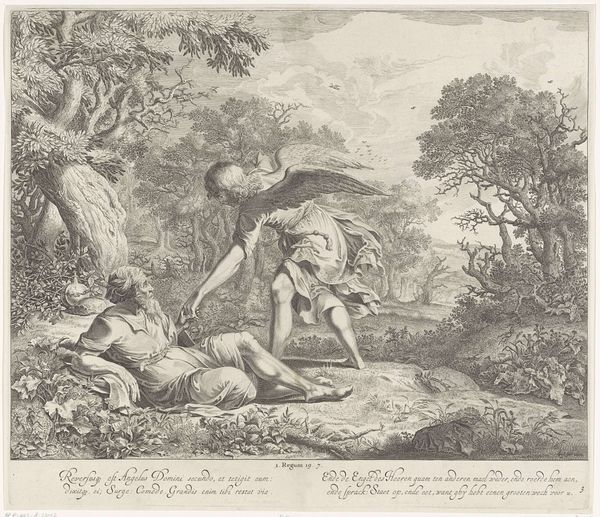
print, engraving
#
16_19th-century
# print
#
old engraving style
#
landscape
#
19th century
#
nude
#
engraving
#
rococo
Dimensions: height 360 mm, width 482 mm
Copyright: Rijks Museum: Open Domain
Editor: Here we have Jean Daullé's "Begluurde baadster bij een vijver," an engraving from 1760 currently held at the Rijksmuseum. The bather in the pond, with a lurker nearby, has a voyeuristic undertone... what's your reading of the image? Curator: It's fascinating how Daullé captures the cultural gaze of the time. Consider the act of observing as itself a potent symbol. The voyeur represents, perhaps, the audience's own position. The presence of the river god is also telling: notice how he lurks amongst reeds – symbols of the natural world and perhaps of uncontrolled instincts. Is this a warning or an invitation? Editor: So the act of observation isn't a passive one? Is there a comment on the nature of power relations or something? Curator: Precisely! Think about it: in whose gaze does beauty reside? Is it the bather, aware of the river god, playing into a staged sensuality? Or is it for the unseen observer? This work evokes older imagery—Diana and Actaeon—while subverting traditional interpretations of virtue and vice, knowledge and power. What emotional reaction did you have toward the two figures here? Editor: The river god makes me uneasy, like an unwanted gaze. The bather’s beauty seems to invite looking while I also find his lurking creepy! Curator: It is a purposefully uncomfortable dynamic, meant to mirror how beauty can be both idealized and weaponized as an object of manipulation. Editor: This changes the way I appreciate Daullé’s composition so much: how we are positioned, how it asks us to engage as the knowing and unknowing, empowered viewers, complicit maybe... Curator: It prompts us to consider how symbols of power and voyeurism persist. We are still entangled in its questions!
Comments
No comments
Be the first to comment and join the conversation on the ultimate creative platform.
